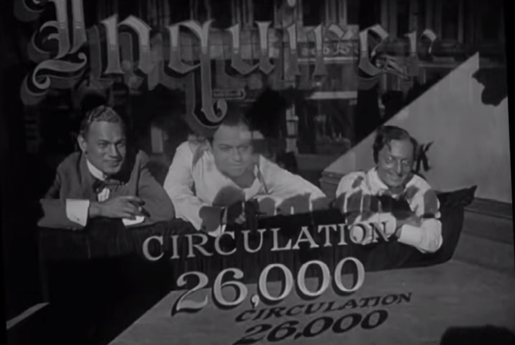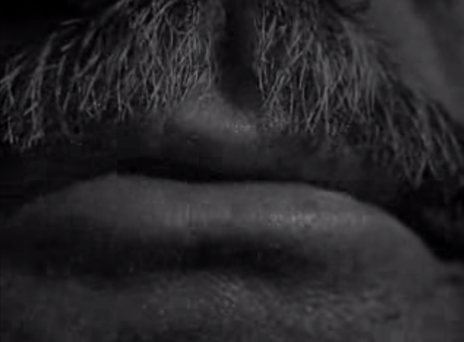
Idyllic is the word for The Trouble with Harry, and it positively crackles with the autumnal delights one can only know in locales where the seasons give way one to another.
Alfred Hitchcock’s filmography boasts many opulent and gorgeously shot sequences, but Trouble With Harry might have some of the most supernal. Part of this comes from the fact it comes in such stark contrast to his environs in Northern California.
Because the East Coast — Vermont in particular — affords him a very particular canvass and he uses them to full effect. The story goes that he went so far as to have leaves pinned back onto trees to try and replicate the shots on a sound stage. Whatever the techniques it boasts something distinctly tangible.
If the locale is not entirely functional, it still manages to be another integral character in the story just as the satisfying crunch of leaves underfoot or the thought of a lemonade out on the porch conjures up visions of a very specific sort. But of course, all of this connotation would be for naught if it was not juxtaposed with the typical Hitchcockian proclivity for the darkly macabre.
The Trouble with Harry might offer his lightest touch — it’s spritzed more evidently with humor than a great many of his movies — but the blackness at its core cannot go unnoticed. Take, for instance, that opening sequence. It’s emblematic of the whole picture. There’s tiny Jerry Mathers freakishly young (even before the days of Leave It To Beaver).
He’s running off on some boyish adventure his toy gun in hand, only to stumble upon the corpse of a man named Harry. The man’s nicely dressed. Laid out in the middle of an open pasture. More importantly, he’s dead.
Hitchcock employs a trick from the painterly masters using foreshortening to make the man’s body envelop the screen as the little boy stares down at him rather inquisitively, ready to run off and tell his mother. From the outset, Bernard Herrmann’s scoring is both rigorous and rather jaunty, perfectly in tune with the sense of place and tone.
But this is no conventional tale of malice or ill-blood. It is, however, the Macguffin to kick our story off. Edmund Gwenn is another fellow who comes upon the body quite by chance — he was out shooting rabbits unsuccessfully — could it be a stray bullet that took Harry out? He thinks it’s better not to risk it and decides to drag the body to more secluded terrain.
However, he’s met by one of his neighbors. John Michael Hayes’ script does splendidly in moments like these. It’s able to place small-town pleasantries up against a grisly murder as if it’s a small trifle — a mere afterthought to be dealt with in the manner of a pothole or a roach problem. In the end, Captain Wiles (Gwenn) and Ms. Gravely (Mildred Natwick), a kindly spinster, set up a date for afternoon tea with the promise of blueberry muffins and genial company.

What of Harry? It’s true the whole world seems to turn up to find him. Soon little Arnie returns with his mother (Shirley MacLaine), and she hardly bats an eye. A local professorial fellow — his nose always in a book — trips over the body without much of an acknowledgment. Even local artist, Sam Marlowe (John Forsythe), has time enough to sketch a crude portrait of the dead man.
He’s your conventional starving artist. Kindly Ms. Wiggs (Mildred Dunnock) puts his particularly exuberant paintings out for sale near her Emporium, though he doesn’t stir up much business from the cows lingering across the pasture.
Ms. Rogers meanwhile is a twice-widowed young woman, and she admits her last husband was too good to live. She’s pursued by Mr. Marlowe even as the old-timers look to start courting in their own way.
The source of the frivolity and the casual delightfulness comes in painting the town as Hitchcock does — this combination of coloring the idiosyncrasies of the quainter side of life as well as the open-air mise en scene, whether pure illusion or not.
What’s lovely about Hitch is the way every movie becomes a sort of game or puzzle in its own right. Because The Trouble with Harry will never be held in the same regard as many of his most obvious successes — movies from this same period of time — but it’s ceaselessly interesting.
Audiences of the 50s would have had a time pinning it down in a conventional sense because it employs fairly frank dialogue whether riddled with innuendo or not, but it also lacks the kind of obvious star power big studios often banked on to sell tickets. Surely Hitchcock could have garnered the best talent and yet he chose not to.
This is a character piece, and it wasn’t meant for the Cary Grants or Jimmy Stewarts of the world — at least not in 1955. It called for something more mundane. And what of the humor? First of all, there are certain expectations from “The Master of Suspense,” and it’s hard to say they are met; it’s almost like he swapped the formula. He leads with the comedy with accents of suspense and the macabre.
A body buried and excavated, put back in the ground, and exhumed time and time again over the course of the day. It’s the film’s prolonged gag. One of the things that makes it feel continually comedic is the lack of a true villain of any consequence.
The closest candidate is Royal Dano, a slightly curmudgeonly sheriff who has a penchant for old cars. He’s sniffing around, always on the side of law and order. No, this is most definitely a comedy, and the two couples join forces to keep their local secret. Because they know quite literally where the dead bodies are buried. Though it’s quite possible none of them is the actual culprit. It’s typical of Hitchcock that his inclinations of Vermont are informed by murder instead of moonlight.
He is, after all, the man who keenly observed that the medium of TV “brought murder back into the home where it belongs.” The Trouble With Harry plays with the same form of morbid levity.
3.5/5 Stars





 Father hear my prayer. Forgive him as you have forgiven all your children who have sinned. Don’t turn your face from him. Bring him, at last, to rest in your peace which he could never have found here. ~ Ida Lupino as Mary Malden
Father hear my prayer. Forgive him as you have forgiven all your children who have sinned. Don’t turn your face from him. Bring him, at last, to rest in your peace which he could never have found here. ~ Ida Lupino as Mary Malden








 Martin Scorsese’s film has also received pointed criticism for its violence which is hard to downplay. However, Taxi Driver remains interesting because it is not bloated with killing (in fact only one scene is actually bloody). Most of the film has to do with relationships or lack thereof because a lot of what Travis does is watch and listen. It might be Martin Scorsese in a cameo as a jealous husband or a presidential candidate asking Bickle’s opinion from the back seat. Furthermore, like any warm-blooded boy, he knows that Cybil Sheppard is a dream girl. And he has enough compassion to want Iris to have a normal childhood. It’s just that his conscientiousness is misdirected and subverted.
Martin Scorsese’s film has also received pointed criticism for its violence which is hard to downplay. However, Taxi Driver remains interesting because it is not bloated with killing (in fact only one scene is actually bloody). Most of the film has to do with relationships or lack thereof because a lot of what Travis does is watch and listen. It might be Martin Scorsese in a cameo as a jealous husband or a presidential candidate asking Bickle’s opinion from the back seat. Furthermore, like any warm-blooded boy, he knows that Cybil Sheppard is a dream girl. And he has enough compassion to want Iris to have a normal childhood. It’s just that his conscientiousness is misdirected and subverted.





